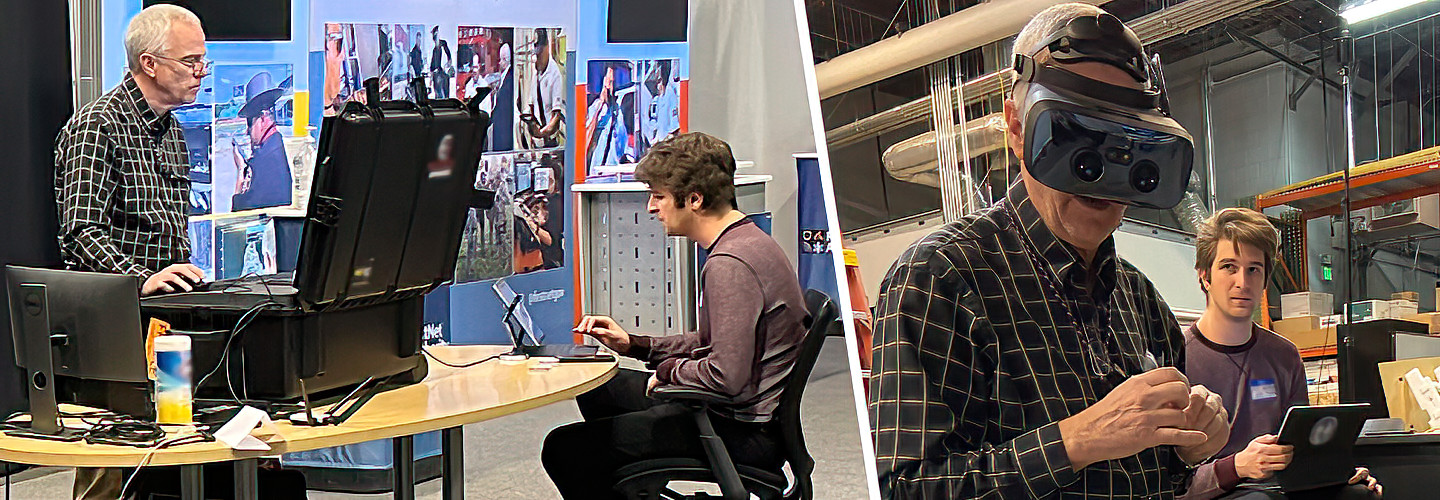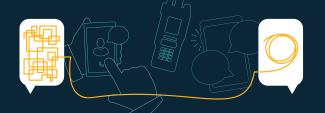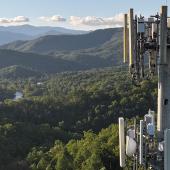The First Responder Network Authority (FirstNet Authority) and the National Institute of Standards and Technology’s (NIST) Public Safety Communications Research Division (PSCR) have worked together for more than a decade to advance public safety communications.
The FirstNet Authority oversees the deployment and operation of FirstNet, the nationwide broadband network built for public safety, and we collaborate with PSCR to drive innovation, research, and development for tomorrow’s technologies. One way PSCR advances public safety technology is through prize challenges.
Advancing innovation through prize challenges
The PSCR prize challenge program encourages innovators and inventors to think outside of the box when finding solutions to unique first responder issues. “Prize challenges have been an incredibly valuable asset to our program and allowed us to interact with teams from academia, students, hobbyists, new businesses, startups, technologists, and innovators that we normally would not have had access to through grants and the contracting process,” explained PSCR Division Chief Dereck Orr.
Most recently, PSCR hosted the Command Dashboard Integrating Next-Gen Technology Challenge (CommanDING Tech challenge) to explore ways to improve the quality of incident command dashboards.
Visualizing information for incident commanders
Current incident command dashboards have limited user interfaces and data access. They can be expensive for public safety agencies, so first responders often resort to manual methods for managing incidents. Tracking resources and assets using paper or whiteboards becomes extremely challenging as emergencies quickly evolve.
CommanDING Tech participants were challenged to create a solution that would help commanding officers to visualize the actionable information, without overloading them with unnecessary data, so they could manage every situation.
The challenge consisted of four phases, beginning with a concept paper and concluding with live product demonstrations with actors. Participants’ solutions ranged from modifying existing dashboards to building new platforms from scratch. As they moved through each phase, participants needed to show growth and demonstrate progress in their solutions.
Many team members at the FirstNet Authority are current or former first responders, so they provide valuable subject matter expertise for PSCR prize challenges. FirstNet Authority Senior Public Safety Advisor Billy Freeman served as a judge for the CommanDING Tech challenge. With 28 years of experience in the fire service, EMS, and disaster response, he has seen firsthand the challenges of managing complex incidents.
“As a commander, I’ve stood at an incident just trying to figure out what’s going on and what responders are doing,” Freeman explained. “Some of the solutions that were developed in this challenge give responders a view of these data points that historically have largely been relayed via voice. When you can see something, you get a better idea of what’s going on, and that’s huge.”
Listening to what public safety needs
Participants in prize challenges don’t always work in the public safety realm, but they can bring a new perspective to common public safety problems. For the CommanDING Tech challenge, participants were encouraged to partner with a public safety entity to better understand the use case and ensure their design would work effectively in the public safety environment.
Combining the expertise of the challenge participants with first responders in the field results in innovative solutions. Orr and Freeman both emphasized this was a key component of the success of solutions in the CommanDING Tech challenge.
“Challenge participants start to realize how critical getting that public safety input is to being successful, and that their job is not to tell public safety what they need. Their job is to listen to public safety and provide them what they need,” said Orr. “It was really exciting to see these winners that truly embraced and appreciated that public safety input.”
The four winning solutions proved their effectiveness during simulated live scenarios, and that success came from incorporating public safety input and truly understanding how the technology can and will work during emergencies and incidents:
- Engineering Dynamics: The Mobile Automatic Path Wayfinding Incident Command Helper (MAPWICH) by Engineering Dynamics enhances incident command systems with high-resolution location-based data. It utilizes advanced technology like LiDAR, sensors, Internet of Things (IoT) datalinks, and indoor positioning for a functional dashboard. The aim is to provide accessible situational awareness and decision-making to first responders without being excessively distracting.
- HeadwallVR: Headwall is a virtual command center dashboard that allows personnel involved in emergency response to glean actionable information from a location and situation. Headwall allows a user to view video feeds, spatial data, maps, 3D information such as LiDAR scans, the location of assets such as personnel and equipment, and the status of those assets.
- TurnRock Labs: SpaceJamTM Commander empowers the next generation of incident commanders to better serve their communities in the digital era. SpaceJamTM provides modular, scalable, and collaborative dashboards connected to digital twin simulation modules. These tools capture and integrate all stakeholders, field operators, sensors assets and data in real time, enabling digital commanders to cut through the overload of data to get to what they need to make critical decisions.
- BadVR: BadVR employs immersive data visualization elements to decrease cognitive load and enhance situational awareness in collaborative emergency response scenarios. The dashboard provides advantages in risk reduction and alleviates fatigue associated with monitoring and analyzing extensive real-time data feeds.
Winners are now getting their dashboards in the hands of first responders, but they are still seeking relationships with additional public safety agencies and industry partners to continue development. All four winners will demonstrate their solutions at 5x5: The Public Safety Innovation Summit (co-hosted by NIST PSCR and the FirstNet Authority) in San Diego, California, from June 28-30. The feedback gathered from these interactions will help the winners continue to evolve their dashboards and bring the technology to market for public safety.
Registration is open for 5x5 until June 28, so don’t miss out on the opportunity to share your feedback.
To learn more about PSCR, visit their website. More information on the FirstNet Authority is available at FirstNet.gov.




















